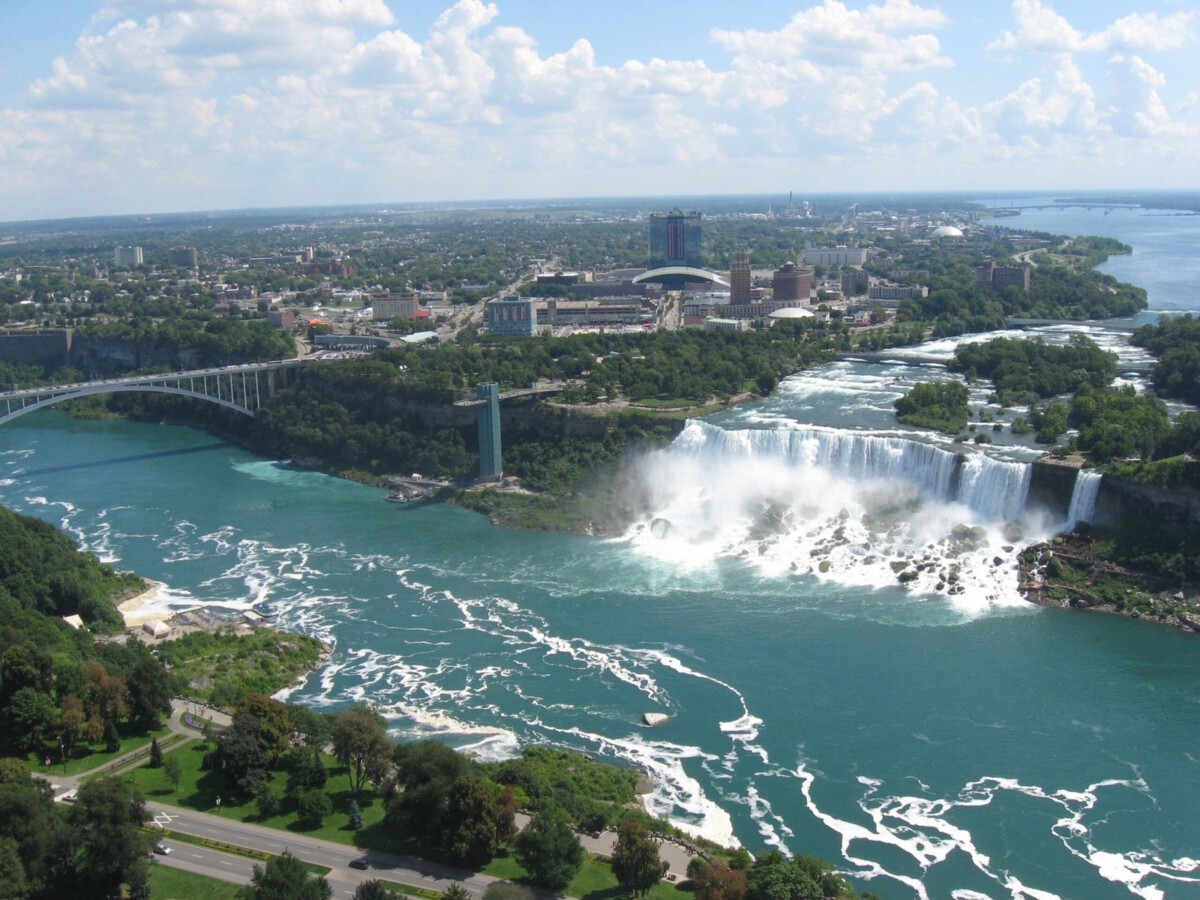The First Decision That Changed Everything

Delaware earned its nickname “The First State” by being the first to ratify the U.S. Constitution on December 7, 1787, making it the first state of the modern United States. In Dover, Delaware, the U.S. Constitution was unanimously ratified by all 30 delegates to the Delaware Constitutional Convention. This wasn’t just ceremonial – it was a massive gamble that paid off for the entire nation. By the terms of the document, the Constitution would become binding once nine of the former 13 colonies had ratified it, and Delaware led the process that made federal democracy the law of the land when New Hampshire became the ninth state on June 21, 1788. Think of it like being the first person to sign up for something that everyone else was too scared to try – except this “something” became the foundation of American democracy. Government under the U.S. Constitution took effect on March 4, 1789.
The Chemical Revolution Started Here

DuPont de Nemours, Inc., commonly shortened to DuPont, is an American multinational chemical company first formed in 1802 by French-American chemist and industrialist Éleuthère Irénée du Pont de Nemours, and the company played a major role in the development of the U.S. state of Delaware. He started the company at the Eleutherian Mills, on the Brandywine Creek, near Wilmington, Delaware, two years after du Pont and his family left France to escape the French Revolution, and the company began as a manufacturer of gunpowder, growing quickly to become the largest supplier of gunpowder to the United States military by the mid-19th century. DuPont developed many polymers such as Vespel, neoprene, nylon, Corian, Teflon, Mylar, Kapton, Kevlar, Zemdrain, M5 fiber, Nomex, Tyvek, Sorona, Corfam and Lycra in the 20th century. The chemical company DuPont generated over 12 billion U.S. dollars of revenue in 2023, with DuPont’s commitment to research and development evident in its substantial annual investments, including approximately 508 million U.S. dollars in 2023.
Corporate America’s Secret Headquarters

67.6 Percent of all Fortune 500 companies are incorporated in Delaware. Approximately 80% of all U.S. initial public offerings in 2023 were registered in Delaware, and 80 percent of U.S. based Initial Public Offerings in 2023 chose Delaware as their corporate home. This isn’t just a random business trend – it’s a strategic advantage that Delaware has carefully cultivated over centuries. Delaware’s General Corporation Law is widely regarded as the most advanced and flexible business formation statute in the nation, and the Court of Chancery is a unique, centuries-old business court that has written most of the modern U.S. corporation case law with their commitment to settling cases in an equitable manner. More than 1,000,000 business entities have made Delaware their legal home, with more than 66% of the Fortune 500 having chosen Delaware as their legal home. It’s like Delaware became the landlord for corporate America without anyone really noticing.
Revolutionary War Heroes You Never Heard Of

In 1776, during the American Revolutionary War, Delaware’s delegates were divided on whether to vote for the Declaration of Independence, but famously, Caesar Rodney, elected to serve as the first president of Delaware two years later, rode 70 miles in the rain from Dover to Philadelphia to cast his vote for independence from England. The state contributed troops, including the Delaware Regiment and the “Blue Hen Chicks,” but saw only one Revolutionary War battle in 1777, at the Battle of Cooch’s Bridge. During the Revolutionary War, the men of Captain Jonathan Caldwell’s company, recruited in Kent County, took with them game chickens that were said to be of the brood of a famous Blue Hen and were noted for their fighting ability, and when not fighting the enemy, the officers and men amused themselves by pitting their Blue Hen chickens in cockfights. That’s right – Delaware soldiers were known for their fighting chickens, and the Blue Hen became the state bird because of this Revolutionary War connection.
The Underground Railroad’s Hidden Network

Wilmington’s Quaker population played a crucial role in the Underground Railroad, helping enslaved people escape to freedom, however, despite the Emancipation Proclamation in 1863, slavery continued in Delaware until the 13th Amendment was ratified in 1865. Local Methodists and Quakers encouraged slaveholders to free their slaves following the American Revolution, and many did so in a surge of individual manumissions for idealistic reasons, with three-quarters of all blacks in Delaware being free by 1810. On February 8, 1865, two months before the end of the Civil War, Delaware voted to reject the Thirteenth Amendment to the United States Constitution and so voted to continue slavery beyond the Civil War, however, the gesture proved futile when other states ratified the amendment, which took effect in December 1865, and in a symbolic move, Delaware belatedly ratified the amendment on February 12, 1901 – 35 years after national ratification. This complex history shows Delaware’s complicated relationship with slavery and freedom.
Banking and Credit Card Capital of America

Over the years Delaware has been called the chemical capital, the corporate capital, and the credit-card capital of the United States, with its liberal incorporation laws and a Court of Chancery that specializes in the most-complex issues of corporate governance and finance having encouraged many American and foreign businesses to make Delaware their nominal home. Delaware became the credit card capital through strategic deregulation in the 1980s, when major banks moved their credit card operations to the state to take advantage of favorable interest rate laws. This wasn’t an accident – it was a calculated economic development strategy that transformed Delaware into a financial powerhouse. Today, most of your major credit cards are technically issued from Delaware, even if you’ve never set foot in the state. In 1980, Delaware’s constitution was amended to restrict the government’s spending to 95% of the state’s expected revenue, which has greatly increased Delaware’s financial situation, and as a result, many financial institutions have moved to the area, and tourism has increased.
Agriculture Powerhouse in Disguise

According to the 2023 Feeding the Economy Report, agriculture employs 69,000 and provides nearly $10.3 billion in economic activity to Delaware, and the state’s 2,300 family farms had $1.5 billion in direct sales to consumers. In 2023, sales from all 17 Delaware community-run farmers markets totaled $4,144,951, up $437,136 from the previous record set in 2022. The appeal and value of Delaware Farmers Markets is apparent given that sales at the markets have grown from $3.72 million in 2021 to $4.46 million in 2024. For such a tiny state, these numbers are absolutely staggering – Delaware’s agricultural sector punches way above its weight class. Peach farming is an important part of Delaware’s agricultural heritage, as the peach was introduced to Delaware in Colonial times and expanded as an industry in the nineteenth century, with Delaware being the country’s leading producer of peaches for part of the nineteenth century, at its peak shipping 6 million baskets to market in 1875.
The Gunpowder That Won Wars

Éleuthère Irénée du Pont arrived in America from France in 1800 and founded the young United States’ largest gunpowder factory on the banks of the Brandywine River just north of Wilmington in 1804. This wasn’t just any gunpowder company – it became America’s military supplier for major conflicts. Wilmington’s growth was mainly due to the vision of a French family, the Dupon de Nemours, who settled here and began making explosives for the American army during the Revolutionary War. The DuPont explosives helped America fight its wars and build its infrastructure, from the Civil War to massive construction projects like the Panama Canal. Delaware literally provided the explosive power that shaped America’s expansion and military might. Think about it – every major American military conflict had Delaware gunpowder behind it.
Civil War’s Complicated Border State

When asked to join the Confederate cause, Delaware Governor William Burton said, “As the first state to join the Union, Delaware will be the last state to leave it.” During the Civil War, Delaware was a slave state that remained in the Union. Fort Delaware became a significant site during the war, holding Confederate prisoners, and nearly 12,000 Delawareans fought for the Union Army, while approximately 2,000 joined the Confederacy. This divided loyalty shows how Delaware sat right at the crossroads of American conflict. Among the political prisoners held at Fort Delaware was the Rev. Issac W. K. Handy, who had commented in December 1863 that the Civil War had tarnished one of the nation’s most cherished symbols, the American flag, and because habeas corpus had been suspended, he was held at the fort for 15 months without trial.
Environmental Battles That Shaped Modern Law

The State of Delaware has reached a landmark $50 million settlement with three local chemical giants — DuPont, Chemours, and Corteva — over water pollution and related contamination from the toxic class of compounds known as PFAS, also known as “forever chemicals.” In June 2023, Chemours (together with Dupont and Corteva) settled claims that they contaminated U.S. public water systems with toxic “forever chemicals” (PFAS) for $1.19 billion, with Chemours paying $592 million and DuPont and Corteva paying the rest. Delaware has become ground zero for some of the most important environmental legal battles in modern America. PFAS have been around since the 1940s and include thousands of compounds used in the production of such household items as nonstick (Teflon) cookware, water-repellent clothing, and carpeting, with exposure linked to some cancers, as well as high cholesterol and thyroid problems. These settlements are setting precedents for environmental law nationwide.
The Strategic Location That Changed Everything

Delaware’s location along the Atlantic coast made it a strategic asset for trade and military operations during the Revolutionary War. The construction of the Chesapeake and Delaware Canal between 1802 and 1829 brought significant shipping interests to Delaware, expanding the state’s commercial opportunities. Delaware Bay is connected with the Chesapeake Bay by a ship canal, 13 miles long, excavated across the state. This tiny state became a crucial shipping corridor between major American cities. The first of the original 13 states to ratify the federal Constitution, it occupies a small niche in the Boston–Washington, D.C., urban corridor along the Middle Atlantic seaboard. Delaware sits right in the middle of the most economically powerful region in America, making it a natural hub for commerce and industry. This Mid-Atlantic state bills itself as “not far from where you are” because it is easily reached by air, rail, or road.
Innovation Laboratory for America

Francis Irénée du Pont (1873-1942) began developing a site as an experimental laboratory for his newly-created Delaware Chemical Engineering Company in 1915, using the lab to continue his research with smokeless gunpowder and other projects, having previously served as a du Pont Company Vice President and first director of the DuPont Experimental Station. DuPont had 150 research and development facilities located in China, Brazil, India, Germany, and Switzerland, with an average investment of $2 billion annually in a diverse range of technologies for many markets including agriculture, genetic traits, biofuels, automotive, construction, electronics, chemicals, and industrial materials. Delaware became America’s innovation laboratory, where countless products we use today were invented and perfected. Known for its innovation, DuPont has developed several groundbreaking products, including Kevlar, Tyvek, and Teflon, with the company’s portfolio serving diverse sectors such as automotive, construction, energy, military and law enforcement, and packaging. From bulletproof vests to non-stick pans, Delaware innovations protect and serve Americans every single day.
Modern Economic Powerhouse

In May 2024, DuPont announced it would split into three publicly traded companies, separating its electronics and water businesses while continuing as a diversified industrial firm, with CFO Lori Koch named CEO effective 1 June 2024, and the split expected to be completed in 18 to 24 months. In 2023, DuPont had 104 manufacturing sites worldwide, out of which 51 were located in the United States and Canada, making this the region with the highest number of manufacturing facilities of the company. Delaware’s economy shifted to a manufacturing base in the late 19th century, led by the transformation of the DuPont Company, with modern growth in the financial workforce overtaking the manufacturing sector in the state’s economy, and the Delaware General Corporation Law providing a flexible framework that attracts many corporations, with over 66% of the Fortune 500 incorporated in Delaware. Despite being the second-smallest state, Delaware continues to drive American economic innovation and corporate governance. The state that started as a tiny colony has become the legal and financial backbone of corporate America.
Delaware proves that size doesn’t determine historical significance – sometimes the smallest players make the biggest moves. From ratifying the Constitution first to housing most of America’s biggest corporations, this little state has been quietly shaping the nation for over two centuries. What would you have guessed about Delaware’s true impact on American history?





